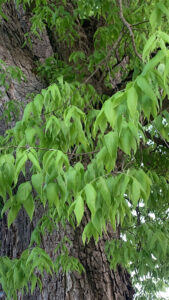Help! There is a large green thing outside my house!
Fear not citizen! What you are looking at is in fact a harmless tree! I know they might seem scary, but once you get to understand them they can be quite amazing! Our first step is to understand HOW to identify one of our tree friends from another. It would be quite rude to call your friend “Paul” when his name is actually Phil! Trees should be treated with the same respect. In Gabriel Popkin’s article Cure Yourself of Tree Blindness, she explains that identifying trees can be quite simple and fun! Understanding the morphology of the branches, the number and shape of the leaves, and even the flowers the tree produces is key to eliminating our ignorance regarding trees.
Can I see some I.D.?
These past couple of days, I have immersed myself in the work of tree identification. I chose Rhodes Park as my base of operations The location itself consisted of a sizably large field, with designated areas for sports littered throughout. I was not interested in sports. I came for the trees. As luck would have it, a temperate woodland surrounded the complex. It was there that I began my identification quest:
Our first on the list is the Swamp Oak, Quercus bicolor. But how did we come to this conclusion? Let’s take a closer look at these leaves. One key identifying feature is the lobed shape the leaves have. Only a select few of oak (as detailed in George A. Petrides, “A Field Guide to Trees and Shrubs) have lobed leaves, so this narrows our search down. Being that the number of teeth on a single leaf numbers around 4-6 pairs, along with the grayish bark, we can safely identify this tree as a Swamp Oak!
Trees like the Swamp Oak have been utilized by humans primarily in the profession of carpentry, making everything from barrels to railroad ties. Swamp Oak galls can also be used for medicinal purposes as well. If you or a loved one is suffering from haemorrhages, chronic diarrhoea, or dysentery please contact your nearest Swamp Oak immediately!
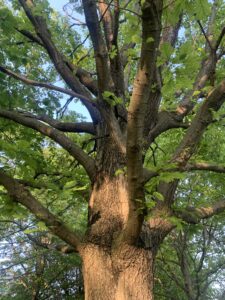
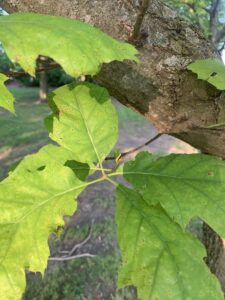
Next up we have the Sawtooth Oak, Quercus acutissima.
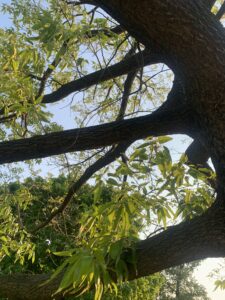
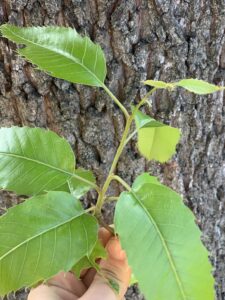
Below is a Southern Sugar Maple, Acer floridanum
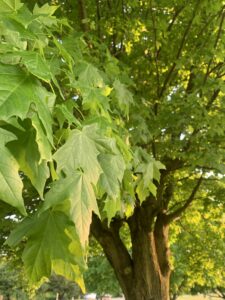
The rest of the trees found below were on the western edge of the park
Here we have the Common Hackberry, Celtis occidentalis.

Warning. Some viewers with a nut allergy may find this next image disturbing. The Pecan tree, Carya illinoinensis,
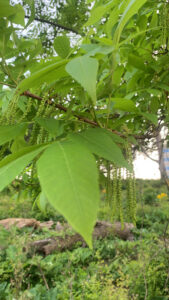
The Bitternut Hickory, Carya cordiformis
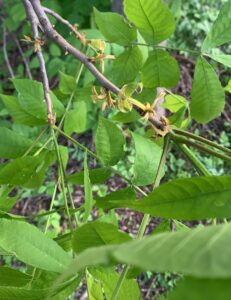
The Red Mulberry, Morus rubra (unlike its close relative the White Mulberry, Morus alba)

Finally we have the Sugar Hackberry, Celtis Laevigata.
